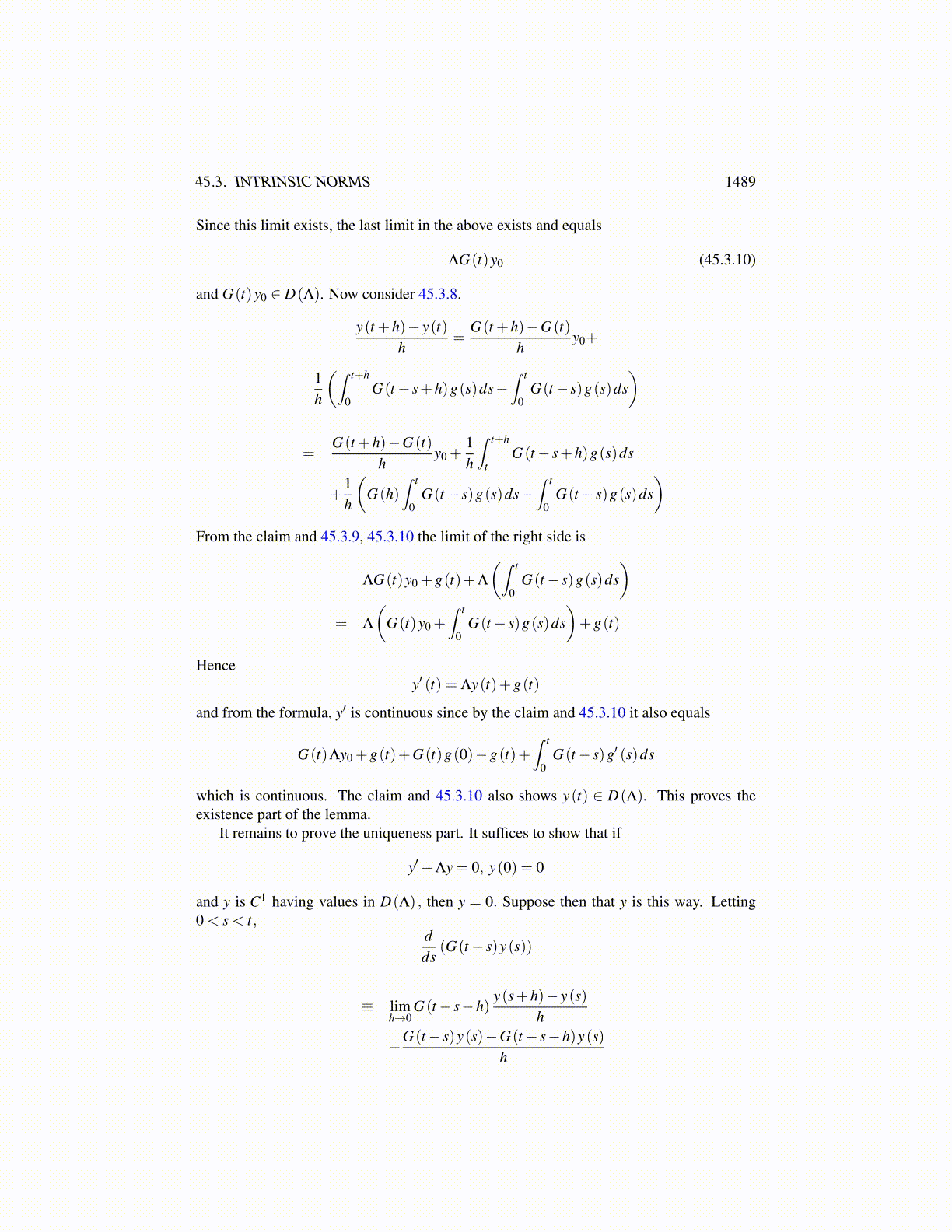
45.3. INTRINSIC NORMS 1489
and so the left side equals ∫∞
−∞
eτ p(α−1)∣∣∣∣∫ τ
−∞
f (eσ )eσ dσ
∣∣∣∣p dτ
=∫
∞
−∞
∣∣∣∣∫ τ
−∞
eτα f (eσ )e−(τ−σ)dσ
∣∣∣∣p dτ
=∫
∞
−∞
∣∣∣∣∫ τ
−∞
e(τ−σ)α e−(τ−σ)eσα f (eσ )dσ
∣∣∣∣p dτ
=∫
∞
−∞
∣∣∣∣∫ ∞
−∞
X(−∞,0) (τ−σ)e(τ−σ)(α−1)eσα f (eσ )dσ
∣∣∣∣p dτ
and by Lemma 45.3.1,
≤(∫ 0
−∞
e(α−1)udu)p ∫ ∞
−∞
epσα | f (eσ )|p dσ
=
(1
1−α
)p ∫ ∞
−∞
epσα | f (eσ )|p dσ
which was to be shown. This proves the lemma.Next consider the case where G(t) , t > 0 is a continuous semigroup on A1 and A0 ≡
D(Λ) where Λ is the generator of this semigroup. Recall that from Proposition 19.14.5 onPage 577 Λ is a closed densely defined operator and so A0 is a Banach space if the norm isgiven by
||u||A0≡ ||u||A1
+ ||Λu||A1
Also assume ||G(t)|| is uniformly bounded for t ∈ [0,∞). I have in mind the case whereA1 = Lp (Rn) and G(t)u(x) = u(x+ tei) but it is notationally easier to discuss this in thegeneral case. First here is a simple lemma.
Lemma 45.3.3 Let A0 = D(Λ) as just described. Then for u ∈ A1
||u||A1+A0= ||u||A1
Proof: D(Λ)⊆ A1. Now let u ∈ A1.
||u||A0+A1≡ inf
{||u0||A1
+ ||Λu0||A1+ ||u1||A1
: u = u0 +u1
}To make this as small as possible you should clearly take u1 = u because
||u0||A1+ ||Λu0||A1
+ ||u1||A1≥ ||u0 +u1||A1
+ ||Λu0||= ||u||A1
+ ||Λu0||
Therefore, the result of the lemma follows.